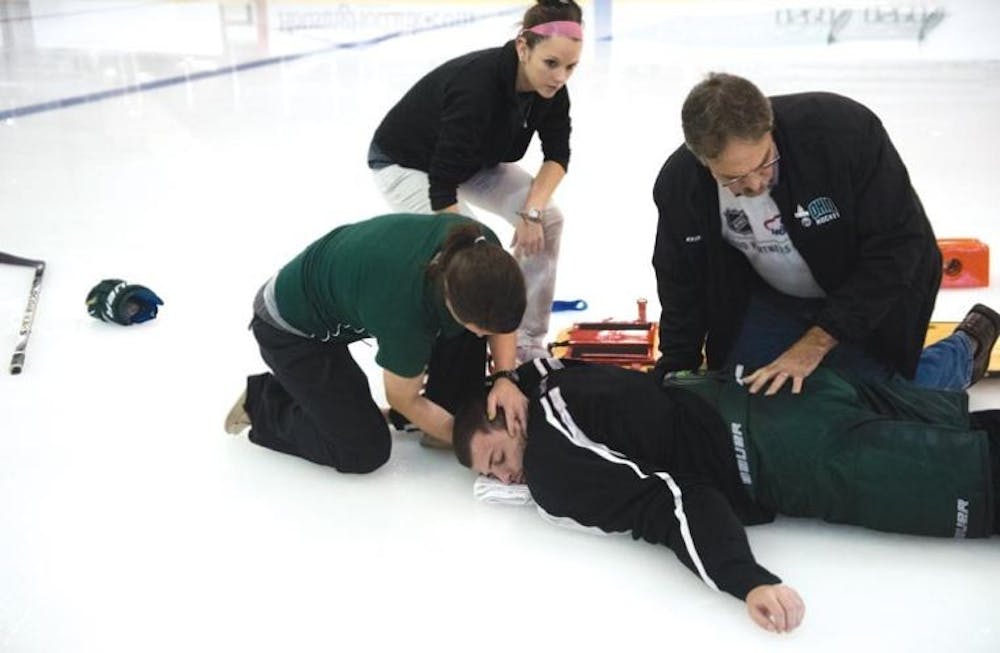From the field to the ice rink, athletic trainers are as common as players and coaches, and train accordingly. That way, they are able to adapt to any situation.
Jerod Keene, a second-year master’s student studying athletic training, and Dan Black, the Ohio hockey team’s doctor, brought athletic training students into the cold and out of their comfort zones to Bird Arena Thursday to teach them specifics of treating injuries on the ice.
“With ice involved, it’s a different outfit than football,” Black said. “In football, you don’t take off the helmets. In hockey, the helmet is a looser fit, so you have to take it off. The person who takes off the helmet is in control of the rest of the procedure.”
Keene has been around hockey his whole life, playing while in college at Arizona, and is in his second year as a trainer for the Bobcats.
He attended a seminar for the National Hockey League Team Physicians Society twice in the past two years, which helped him adapt to acting on the ice.
“That conference gave me a broader perspective on treating hockey players,” he said. “They had a few case studies that were unusual that now I have an idea if I see something like that.”
Keene said he relates to players’ injuries well because he spent years on the other side of the athletic equation. He taught students about stabilizing an injured player’s neck and head before transporting him or her off the ice.
Ohio player Michael Harris served as the test subject. A simulated check from a fellow teammate put Harris on the ice ready to receive medical attention.
Keene took the lead, in the first practice session, by securing Harris’s head and neck while the other students fastened to Harris to the spine board. Harris said the trainers did well in keeping him steady throughout the process, and was happy to see a forward-thinking effort to keep players safe.
“It can happen any game — every game,” he said. “Guys can get paralyzed from hits that are bad. Who knows if it’s from the treatment they got or the actual hit itself, but the better the treatment, the better hands they are in.”
Black said that keeping athletes stable isn’t the trainers’ only objective. They also have to maintain a level head and remain composed, regardless of the situation.
“Being professional is key,” Black said. “It lets the audience know that the player has a good chance of making a healthy return from the injury.”
nr225008@ohiou.edu






